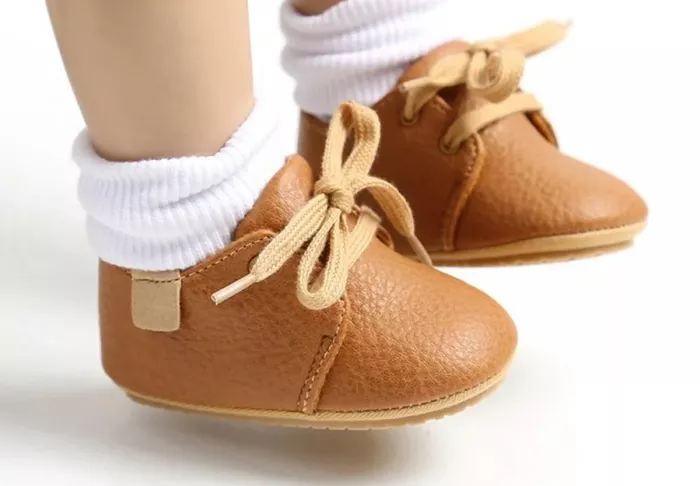When it comes to dressing your little one, every detail matters, and that includes finding the right size shoe. As a parent, you want to ensure that your baby is comfortable and that their tiny feet are properly supported. But with so many options available, how do you know what size shoe your 3-month-old should wear? This article will guide you through the process of choosing the right shoe size for your infant, taking into account their development, foot size, and the importance of proper footwear.
Understanding Your Baby’s Foot Development
Before diving into shoe sizes, it’s essential to understand how your baby’s feet are developing at three months. At this age, your baby’s feet are still very soft and flexible, composed mostly of cartilage that will gradually harden into bone as they grow. Their feet are also quite sensitive and are growing rapidly.
Why Proper Footwear is Important
While it may seem early to start thinking about shoes, proper footwear is crucial even for infants. Although your 3-month-old isn’t walking yet, the right shoe size can provide warmth, protection, and support as their feet develop. Poorly fitting shoes can lead to discomfort and might even impede natural foot development. Thus, selecting the appropriate shoe size is essential for your baby’s overall foot health.
Measuring Your Baby’s Feet
When to Measure
Babies’ feet grow quickly, and it’s important to measure them regularly, even at such a young age. At three months, it’s a good idea to measure your baby’s feet every few weeks to ensure they’re not outgrowing their shoes too fast.
How to Measure
To accurately measure your baby’s feet, follow these steps:
Gather Supplies: You’ll need a piece of paper, a pencil, and a ruler.
Position Your Baby: Have your baby lie down or sit in a relaxed position with their feet flat on the paper.
Trace the Foot: Gently press down on your baby’s foot to ensure it’s fully extended, then trace around it with the pencil.
Measure the Length: Use the ruler to measure the distance from the heel to the longest toe. This is the length of your baby’s foot.
Measure the Width: Measure across the widest part of the foot.
Understanding Foot Measurements
The length and width of your baby’s foot will give you a good idea of what shoe size to look for. Baby shoes typically follow a standard sizing chart, but it’s important to note that sizes can vary slightly between brands.
Shoe Size Chart for 3-Month-Olds
Most 3-month-olds will fit into a shoe size between 0 and 2, depending on their foot length.
Choosing the Right Type of Shoe
Soft-Soled Shoes
For a 3-month-old, soft-soled shoes are often the best choice. These shoes are flexible and allow your baby’s feet to move naturally. They provide a layer of protection without restricting movement.
Crib Shoes
Crib shoes are another popular option for infants. They are designed specifically for non-walking babies and are typically made of soft, breathable materials that provide warmth and protection.
Socks with Grips
If you prefer not to put your baby in shoes just yet, socks with grips can be a good alternative. These socks have non-slip soles that help prevent slipping when your baby starts to push off with their feet.
Signs That Your Baby’s Shoes Don’t Fit Properly
Even after carefully measuring your baby’s feet, it’s important to watch for signs that their shoes might not fit properly. Here are some indicators to look out for:
Red Marks: If you notice red marks or indentations on your baby’s feet after removing their shoes, it could be a sign that the shoes are too tight.
Crying or Fussiness: Your baby may become fussy or cry if their shoes are causing discomfort.
Difficulty Putting on Shoes: If you find it challenging to put the shoes on, they might be too small.
See also: When Should I Buy Hard Bottom Shoes for My Baby
Tips for Buying Baby Shoes
Opt for Adjustable Shoes
Shoes with adjustable closures, such as Velcro or elastic, can provide a better fit and accommodate slight changes in foot size as your baby grows.
Choose Breathable Materials
Look for shoes made from breathable materials like soft leather or cotton. These materials will keep your baby’s feet comfortable and help prevent sweating.
Consider Growth Room
When buying shoes for your 3-month-old, consider leaving a little room for growth. However, avoid buying shoes that are too big, as they can cause tripping and discomfort.
Shop in the Afternoon
If possible, try shopping for shoes in the afternoon or evening, when your baby’s feet may be slightly swollen. This will give you a more accurate idea of how the shoes will fit throughout the day.
Conclusion
Choosing the right shoe size for your 3-month-old is an important decision that can impact their comfort and foot development. By understanding your baby’s foot growth, measuring their feet accurately, and selecting appropriate footwear, you can ensure that their tiny feet are well-protected and supported. Remember to regularly check the fit of their shoes and be prepared to adjust sizes as they grow. With the right care and attention, your baby’s feet will continue to develop healthily, setting the stage for their first steps and beyond.
FAQs
How often should I replace my baby’s shoes?
Babies’ feet grow rapidly, so you may need to replace their shoes every few months. Regularly check the fit and look for signs that the shoes are becoming too tight.
Is it necessary for my 3-month-old to wear shoes?
While shoes aren’t strictly necessary at this age, they can provide warmth and protection, especially in cooler weather or when you’re out and about.
Can I use hand-me-down shoes for my baby?
Hand-me-down shoes can be an option, but make sure they haven’t lost their shape or support. The shoe should fit your baby’s feet properly to avoid discomfort or developmental issues.


